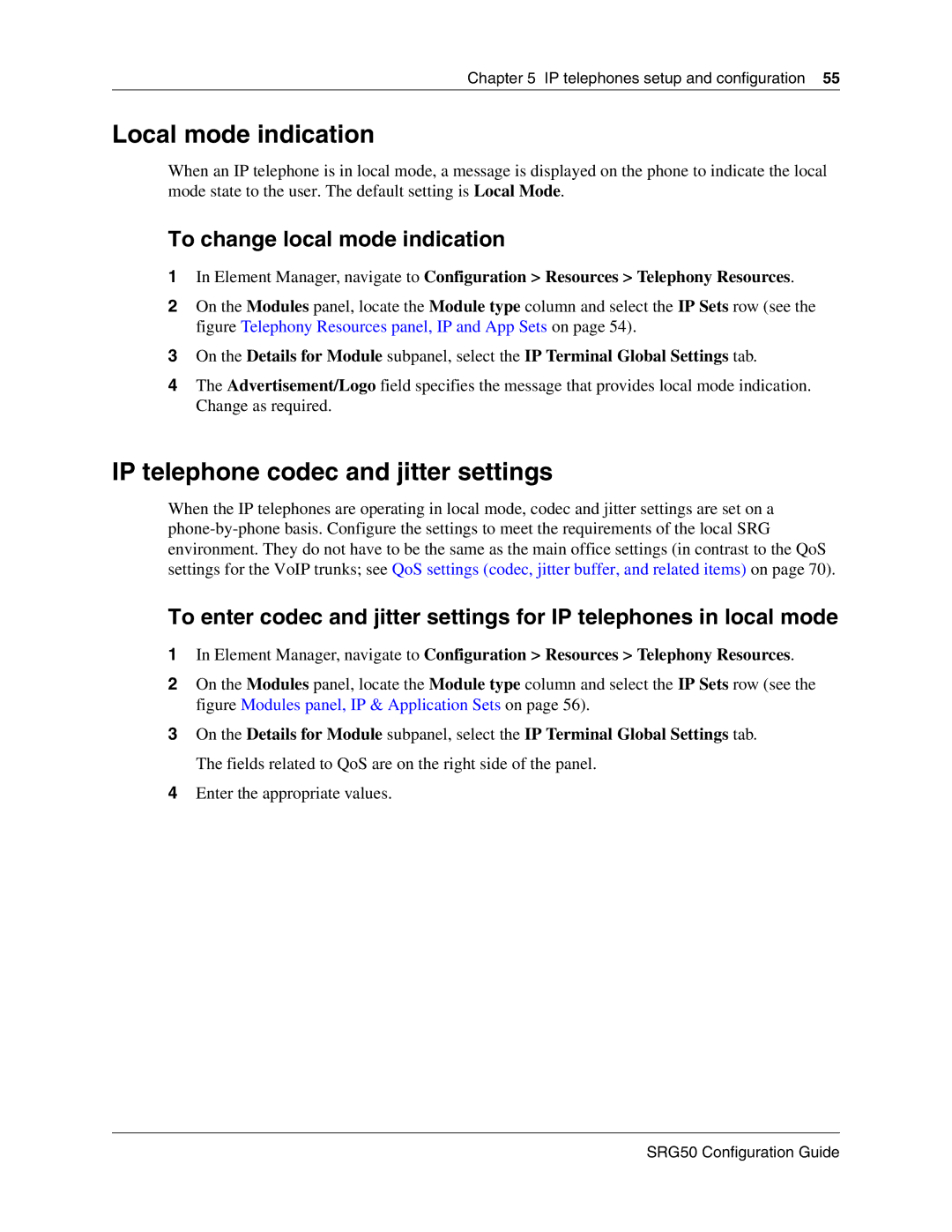
Chapter 5 IP telephones setup and configuration 55
Local mode indication
When an IP telephone is in local mode, a message is displayed on the phone to indicate the local mode state to the user. The default setting is Local Mode.
To change local mode indication
1In Element Manager, navigate to Configuration > Resources > Telephony Resources.
2On the Modules panel, locate the Module type column and select the IP Sets row (see the figure Telephony Resources panel, IP and App Sets on page 54).
3On the Details for Module subpanel, select the IP Terminal Global Settings tab.
4The Advertisement/Logo field specifies the message that provides local mode indication. Change as required.
IP telephone codec and jitter settings
When the IP telephones are operating in local mode, codec and jitter settings are set on a
To enter codec and jitter settings for IP telephones in local mode
1In Element Manager, navigate to Configuration > Resources > Telephony Resources.
2On the Modules panel, locate the Module type column and select the IP Sets row (see the figure Modules panel, IP & Application Sets on page 56).
3On the Details for Module subpanel, select the IP Terminal Global Settings tab. The fields related to QoS are on the right side of the panel.
4Enter the appropriate values.
